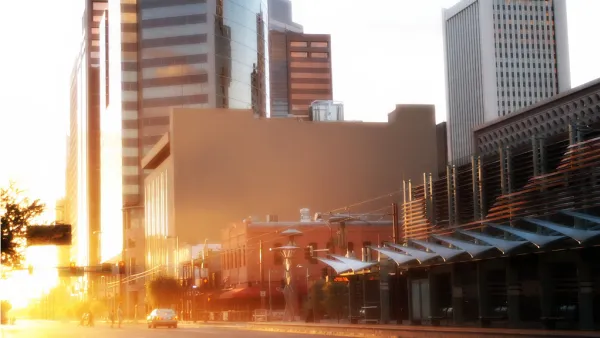White roofs have gained cachet as a solution to the urban heat island effect. But in places where there are more cold days than hot, a white roof that reflects warming sunlight might not make the best sense, according to this piece.
"By having information on the different roof choices, building owners can choose the roof that is best for their location and climate, and that best solution isn't always white.
The Cool Roof Rating Council admits to a "winter penalty" when cool roofs are installed in northern climates. An article in the April edition of Maintenance Solutions magazine that was penned by the CRRC states, "Heating costs may increase slightly for buildings located in cooler regions." CRRC's justification for increasing heating costs and greenhouse gasses was that days (sunlight hours) are longer in the summer than they are in the winter, thus more energy is consumed to cool a building than to heat it.
The article failed to mention spring and autumn. However, information gathered from the U.S. Department of Energy clearly demonstrates that heating is a much more significant factor in energy usage than cooling. For instance, Grand Rapids, Mich., has 7,153 heating degree days versus 508 cooling degree days per year, which means heating equipment runs approximately 14.3 hours for every one hour that cooling equipment runs."
"...To illustrate this point, I've chosen three major U.S. cities and provided analyses of energy and carbon footprint models, all generated using the DOE's cool-roof calculator, to help lend some clarification and hopefully dispel some growing cool-roof myths.
• Boston, Mass.: 5,841 HDD versus 646 CDD
• Grand Rapids, Mich.: 7,153 HDD versus 508 CDD
• Albuquerque, N.M.: 4,361 HDD versus 1,211 CDD
Due to the overwhelming amount of heating degree days and positive winter heat gain in these locations, in all instances, energy consumption and carbon emissions are fewer with a dark roof surface than with a reflective surface. This is true even as far south as Albuquerque. It is also important to note that increased insulation dramatically reduces energy consumption in every model."
FULL STORY: A White Roof Isn't Always the Right Roof

Analysis: Cybertruck Fatality Rate Far Exceeds That of Ford Pinto
The Tesla Cybertruck was recalled seven times last year.

National Parks Layoffs Will Cause Communities to Lose Billions
Thousands of essential park workers were laid off this week, just before the busy spring break season.

Retro-silient?: America’s First “Eco-burb,” The Woodlands Turns 50
A master-planned community north of Houston offers lessons on green infrastructure and resilient design, but falls short of its founder’s lofty affordability and walkability goals.

Test News Post 1
This is a summary

Analysis: Cybertruck Fatality Rate Far Exceeds That of Ford Pinto
The Tesla Cybertruck was recalled seven times last year.

Test News Headline 46
Test for the image on the front page.
Urban Design for Planners 1: Software Tools
This six-course series explores essential urban design concepts using open source software and equips planners with the tools they need to participate fully in the urban design process.
Planning for Universal Design
Learn the tools for implementing Universal Design in planning regulations.
EMC Planning Group, Inc.
Planetizen
Planetizen
Mpact (formerly Rail~Volution)
Great Falls Development Authority, Inc.
HUDs Office of Policy Development and Research
NYU Wagner Graduate School of Public Service



























